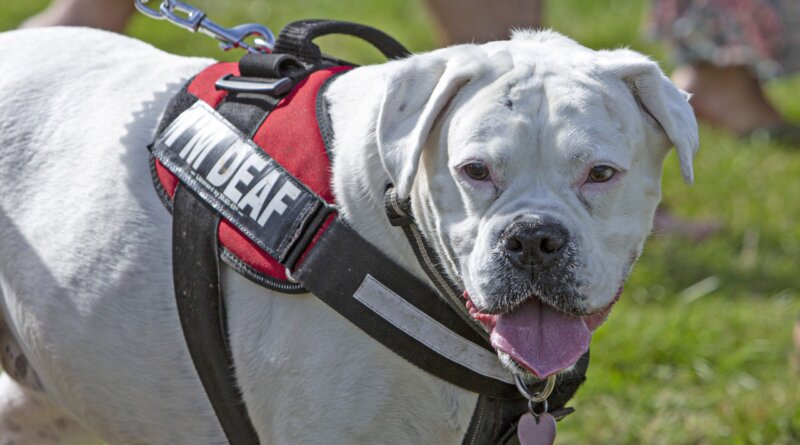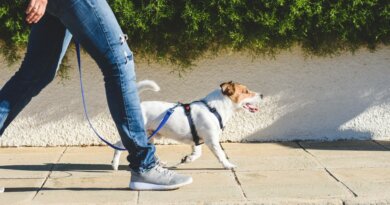Do They Make Hearing Aids for Dogs?
If you have dog who is losing his hearing, you may wonder if a hearing aid would help. Right now, dog hearing aids must be custom fit for each dog, to the tune of $3,000 or more. The FETCHLab at the University of Cincinnati is one place where you can have a hearing aid made for your dog.
Your dog will need to be trained to wear the hearing aid, and adjustments may be necessary for both fit and settings. Also, hearing aids also will not work for dogs who have lost all hearing. This is because all hearing aids amplify hearing, but with congenital deafness there is no residual hearing left to amplify.
Collars that vibrate, called a vibration collar, can be useful a useful tool for training deaf dogs. This is not a shock collar, which we do not approve of using, and it should never be used as a correction collar. If you look at vibration collars, avoid any brands that are also capable of delivering a shock.
Whole Dog Journal Contributing Editor Pat Miller used two different vibration collars on her dogs to see how they worked, saying, that a vibration collar is “certainly something I recommend to owners of deaf dogs as a useful communication tool.” Of the two, she found the less expensive Wolfhill collar the better choice.
Deaf-Dog Care
For most dogs, management strategies are a simpler and less expensive way to handle a dog who cannot hear well.
These 10 management and training strategies may help our dog cope with hearing loss:
- Start teaching hand signals for common skills and behaviors as soon as you notice signs of hearing loss. This will allow you to communicate with your dog visually.
- Teach your dog to come inside from the yard or look at you when you blink the lights.
- With the help of a trainer, introduce a vibrating deaf dog collar so you can get your dog’s attention at a distance.
- Keep your dog on leash or in a fenced yard, as he won’t be able to hear approaching cars.
- Stomp your feet when approaching your dog from behind so he can feel the vibrations of your approach and won’t startle.
- Start teaching hand signals for common skills and behaviors as soon as you notice signs of hearing loss. This will allow you to communicate with your dog visually.
- Teach your dog to come inside from the yard or look at you when you blink the lights.
- With the help of a trainer, introduce a vibrating deaf dog collar so you can get your dog’s attention at a distance.
- Keep your dog on leash or in a fenced yard, as he won’t be able to hear approaching cars.
- Stomp your feet when approaching your dog from behind so he can feel the vibrations of your approach and won’t startle.
Is My Dog Losing Hearing?
Signs of hearing loss include:
- Not meeting you at the door when you get home
- Slow to respond to verbal cues
- Startling when approached from behind
Hearing loss can be loosely split into two categories: congenital deafness and acquired hearing loss.
Congenital deafness is when your puppy is born deaf due to a genetic defect. Dogs with a lot of white on their heads, particularly if both parents are merles, are more likely to be born deaf. Deafness can often be noticed by 3 to 4 weeks of age by an astute observer, as these puppies won’t respond to loud noises or react to their siblings squealing. These dogs have no trouble navigating their silent world, as it is the only one they’ve ever known.
Acquired hearing loss is when your dog loses hearing later in life due to an injury, illness, or age-related changes. These dogs usually have progressive hearing loss, with subtle changes at first that gradually become more obvious.





